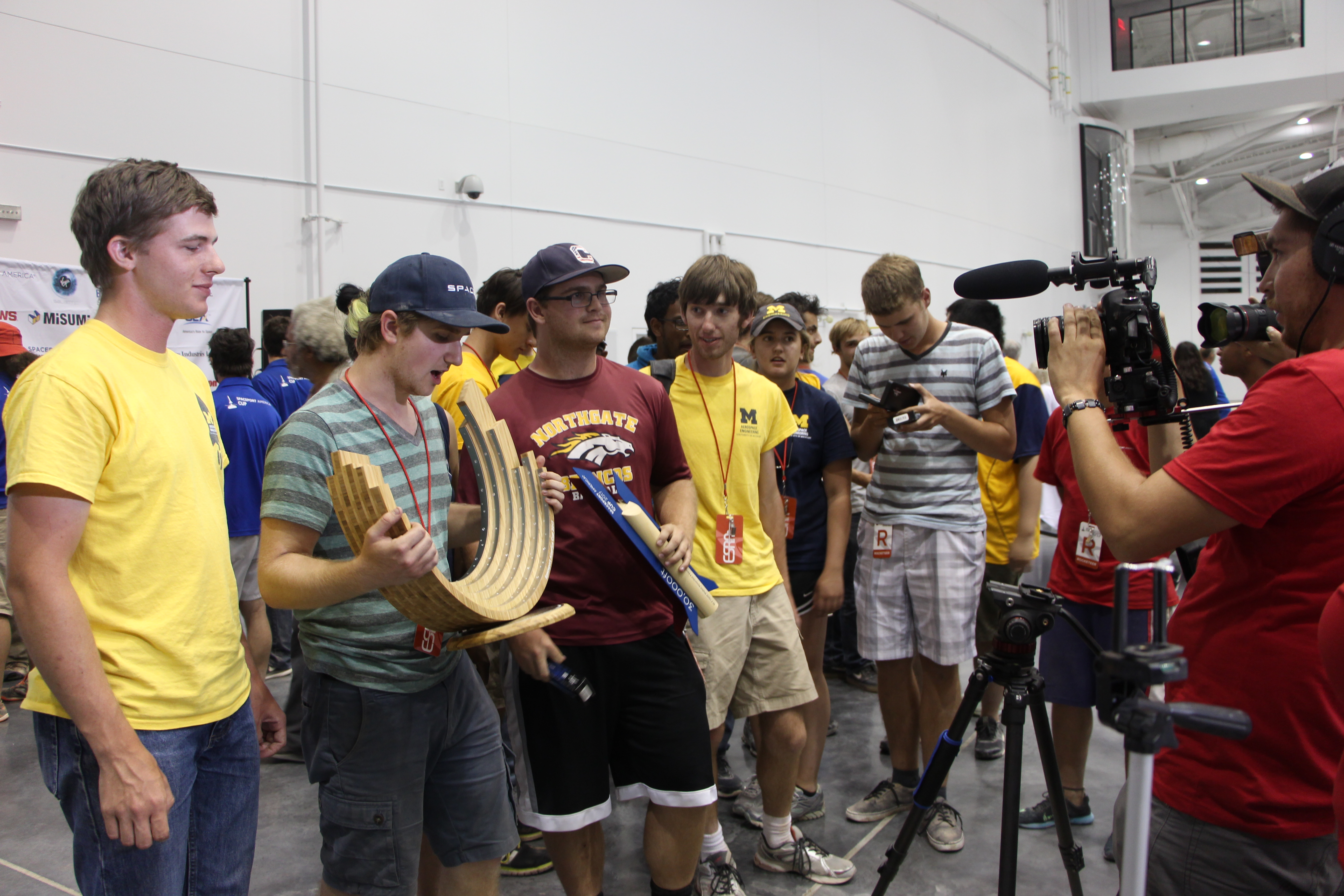Student-Made Rocket Tops 30,000 Feet, Wins 1st 'Spaceport America Cup'

A student team from the University of Michigan, Ann Arbor, took top honors last weekend at the 2017 Spaceport America Cup in New Mexico.
The Michigan competitors were chosen as the team that most impressed judges overall after also winning first prize in a category that saw them send a rocket to more than 30,000 feet (9,000 meters) above ground level. (Rocket flights were tasked with flying to either 10,000 or 30,000 feet, or 3,000 to 9,000 m, depending on the category.)
Summer interns at United Launch Alliance (ULA) achieved another milestone — the largest sport rocket ever launched — when they sent aloft a 53-foot-tall (16 m) rocket. The craft carried 16 payloads from K-12 students, mentors at Ball Aerospace and a combined ULA/Roush Industries team. The 1,350-lb. (612 kilograms) rocket launched "thousands of feet" above ground level to inspire education in science, technology, engineering and math (STEM), ULA representatives said in a statement. [Amazing Small Rocket Launches by NASA (Photos)]
"The cup is just incredible," said Daniel Hicks, CEO of Spaceport America, in a phone interview with Space.com on Friday (June 23) from the competition site. "We've been looking forward to it all year long. The excitement in their [the students'] faces as they get ready to compete is amazing. Each student has been working on these rockets for over a year, getting ready for this event."
Speaking briefly by phone from the launch area on Friday, Matthew Ellengold, president of co-organizer the Experimental Sounding Rocket Association (ESRA), said events had been going smoothly for the 110 teams on site.
"I've been so busy running around that I don't get an opportunity to sit back and appreciate the magnitude of it until it's all said and done," Ellengold added.
This was the inaugural year of the Spaceport America Cup, but it is a new iteration of ESRA's International Rocket Engineering Competition. After 11 years of operations, the final ESRA cup was held in 2016 in Green River, Utah, with 40 teams.
Breaking space news, the latest updates on rocket launches, skywatching events and more!
Spaceport America invited ESRA to co-create a new cup after realizing that ESRA was outgrowing its facilities, said Tammara Anderton, Spaceport America's vice-president of business development, in a previous interview with Space.com. (The first competition year for ESRA saw only four or five teams.)
Past participants in the ESRA competition have landed jobs all over the United States, including with name-brand space companies such as ULA, Boeing, Blue Origin and SpaceX. [Space Calendar 2017 - Rocket Launches & Night Sky Events]
The full list of the 2017 Spaceport America Cup winners is:
IREC Team Conduct Awards:
- Team Spirit Award — Rowan University
- Team Sportsmanship Award — Oregon State University
IREC Technical Excellence and Innovation Awards:
- Charles Hoult Award for Modeling & Simulation — Texas A&M University
- James Barrowman Award for Flight Dynamics — Missouri University of Science and Technology
- Dr. Gil Moore Award for Innovation — École de technologie supérieure Montreal
- Jim Furfaro Award for Technical Excellence — University of Waterloo
Space Dynamics Laboratory Payload Challenge
- First Place — University of Victoria
- Second Place — George Washington University
- Third Place — Southern Utah University
- Honorable mention for incredible engineering research done at altitude — Concordia University
- Honorable mention for engineering design and fabulous manufacture of a quadcopter — McGill University
10,000-foot apogee with commercial-off-the-shelf (COTS) solid or hybrid rocket propulsion system
- First Prize — University of British Columbia
- Second Prize — Massachusetts Institute of Technology
30,000-foot apogee with COTS solid or hybrid propulsion system
- First Prize — Stanford University
- Second Prize — Ryerson University
10,000-foot apogee with student researched and developed (SRAD) solid rocket propulsion system
- First Prize — West Virginia University
- Second Prize — Missouri University of Science and Technology
30,000-foot apogee with SRAD solid rocket propulsion system
- First Prize — The Ohio State University
- Second Prize — University of Arizona AIAA
10,000-foot apogee with SRAD hybrid or liquid rocket propulsion system
- First Prize — University of Waterloo
- Second Prize — Texas A&M University
30,000-foot apogee with SRAD hybrid or liquid rocket propulsion system
- First Prize — University of Michigan, Ann Arbor
- Second Prize — University of Washington
Follow us @Spacedotcom, Facebook and Google+. Original article on Space.com.

Elizabeth Howell (she/her), Ph.D., was a staff writer in the spaceflight channel between 2022 and 2024 specializing in Canadian space news. She was contributing writer for Space.com for 10 years from 2012 to 2024. Elizabeth's reporting includes multiple exclusives with the White House, leading world coverage about a lost-and-found space tomato on the International Space Station, witnessing five human spaceflight launches on two continents, flying parabolic, working inside a spacesuit, and participating in a simulated Mars mission. Her latest book, "Why Am I Taller?" (ECW Press, 2022) is co-written with astronaut Dave Williams.

